What's New
Displaying results 2871 - 2880 of 4052
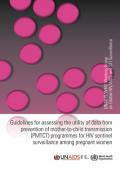
Resource | Guidelines,
This document provides guidance to countries for assessing the utility of data from programmes for prevention of mother-to-child transmission (PMTCT) of human immunodeficiency virus (HIV) for HIV sentinel surveillance (HSS) among pregnant women.
This guidance document is written for national HIV/acquired immunodeficiency syndrome (AIDS) programme managers, surveillance officers and epidemiologists responsible for monitoring HIV trends in low- and middle-income countries.
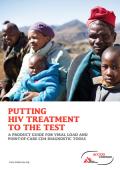
Resource | Publications,
This report is a guide for policymakers, treatment providers and advocates interested in learning more about laboratory-based and point-of-care viral load HIV diagnostic products, and point-of-care CD4 HIV diagnostic products.
The report includes: information on how routine viral load (VL) monitoring improves HIV treatment outcomes; information on why the use of VL monitoring is particularly important for confirming treatment failure and for ensuring prevention of mother-to-child transmission of HIV (PMTCT); decision guide for purchasers, and information on how to evaluate the use of point-of-care (POC) and lab-based technologies in different contexts; technical specifications and pricing information for 13 diagnostic tools.
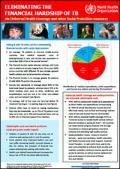
Resource | Fact Sheets,
- On average, TB patients in low-and middle-income countries face medical expenses, costs of seeking/staying in care, and income loss equivalent to more than 50% of his or her annual income.
- The financial burden varies between settings, with total cost in relation to income ranging from 2% to over 300% across countries with different TB care models, general health systems and social protection schemes.
- The financial burden is on average greater for persons ill with MDR-TB and for the poorest.
- Income loss represents on average about 60% of the total costs faced by patients, whereas about 25% is for direct medical costs such as tests, medicines and hospitalization, and the rest is for other care-related costs, such as transport
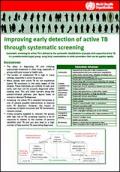
Resource | Fact Sheets,
Systematic screening for active TB is defined as the systematic identification of people with suspected active TB, in a predetermined target group, using tests, examinations or other procedures that can be applied rapidly.
The delay in diagnosing TB and initiating appropriate treatment is often long, especially in groups with poor access to health care. The burden of undetected TB is high in many settings, especially in some risk groups. Many people with active TB do not experience typical TB symptoms in the early stages of the disease. These individuals are unlikely to seek care early, and may not be properly diagnosed when seeking care. This and other barriers along the patient-initiated pathway leads to missed or delayed TB diagnoses.
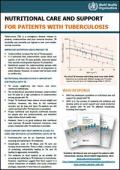
Resource | Fact Sheets,
Tuberculosis (TB) is a contagious disease related to poverty, undernutrition and poor immune function. TB morbidity and mortality are highest in low- and middle-income countries.
Undernutrition increases the risk of TB. It is estimated that undernutrition causes about one quarter of all new TB cases globally. Improved global food security would greatly improve TB prevention. Nutritional support for undernourished persons with latent TB infection may reduce risk of progression to active disease. However, no proper trial has been done to confirm this.
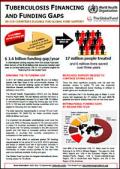
Resource | Fact Sheets,
In 2011, 8.7 million people fell ill with TB and 1.4 million people lost their lives to this communicable disease. TB ranks as the second leading cause of death from an infectious disease worldwide, after the human immunodeficiency virus (HIV).
It is projected that domestic contributions could cover the bulk (over 65%) of financing required for TB care and control in these 118 countries, equivalent to US$ 3.2 billion. This will require that TB funding increases in line with economic growth and that there is increased political commitment especially in countries that currently underperform in comparison to their ability to pay.
This is the first effort to estimate global TB funding requirements for the period 2014 to 2016. WHO’s estimates are based on detailed work with 9 high-burden countries in collaboration with the Global Fund and the Stop TB Partnership, to review country priorities for the next three years and estimate available funding and gaps. The Global Fund provides the largest international donor funding stream for TB efforts.
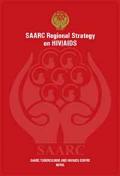
Resource | Publications,
The SAARC region has a low level of HIV infection, but the sheer numbers of people living with HIV (PLHIV) is quite high, estimated at 2.57 million, with the largest burden shared by three countries: India 2.4 million, Pakistan 98,000, and Nepal 64,000. The epidemic is concentrated in certain geographical pockets (six states of India, large cities of Pakistan, and large cities and bordering districts of Nepal) and among key affected population, such as sex workers, men who have sex with men (MSM), people who inject drugs (PWID), and transgender people.
The key commitment of the First SAARC Strategy was to urgently scale-up responses towards achieving the goal of universal access to comprehensive prevention, treatment, care and support by 2010. Though there have been significant improvements, these have not been uniform across all countries and there are pockets where HIV prevalence is on the increase. The current strategy is an effort to strengthen the regional responses based on lessons learned from the outcomes of the first SAARC Strategy on HIV/AIDS.

Resource | Presentations,
Presentation presented at 7th IAS Conference on HIV Pathogenesis, Treatment and Prevention Date: 1 July 2013 Place: Kuala Lumpur

Resource | Presentations,
Asia-Pacific Aspirations Perspectives for the Post-2015 Development Agenda in South Asia
Organized by ESCAP/ADB/UNDP regional partnership
20 September 2013 Bangkok, Thailand






